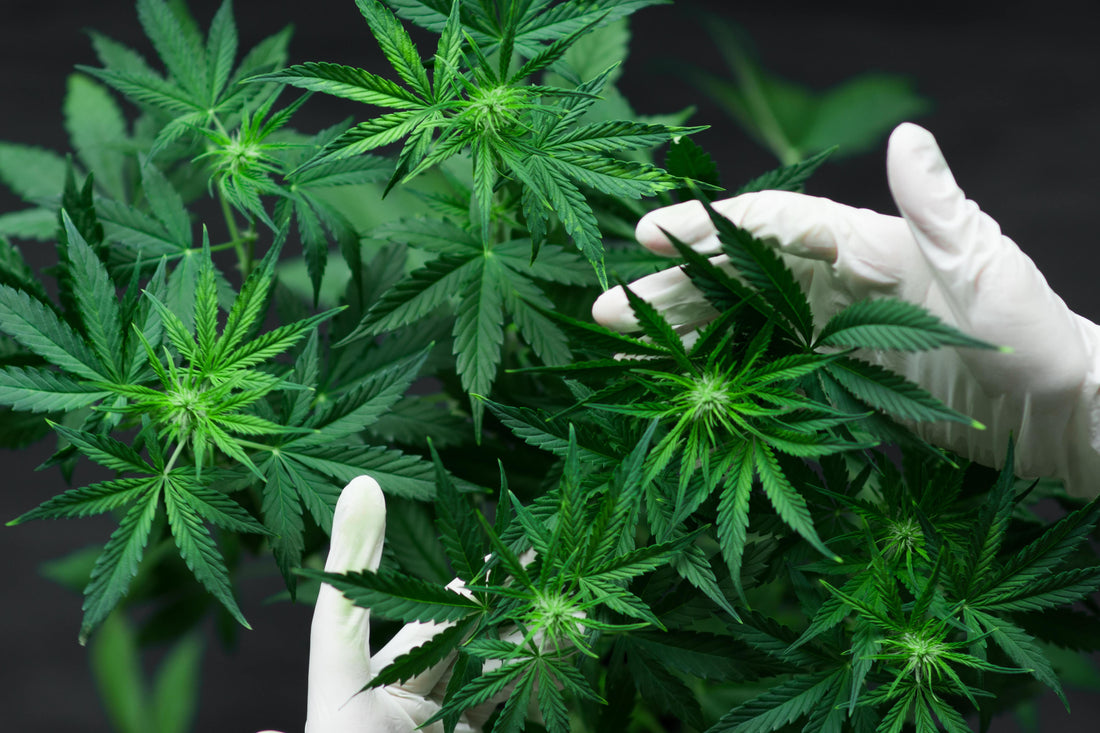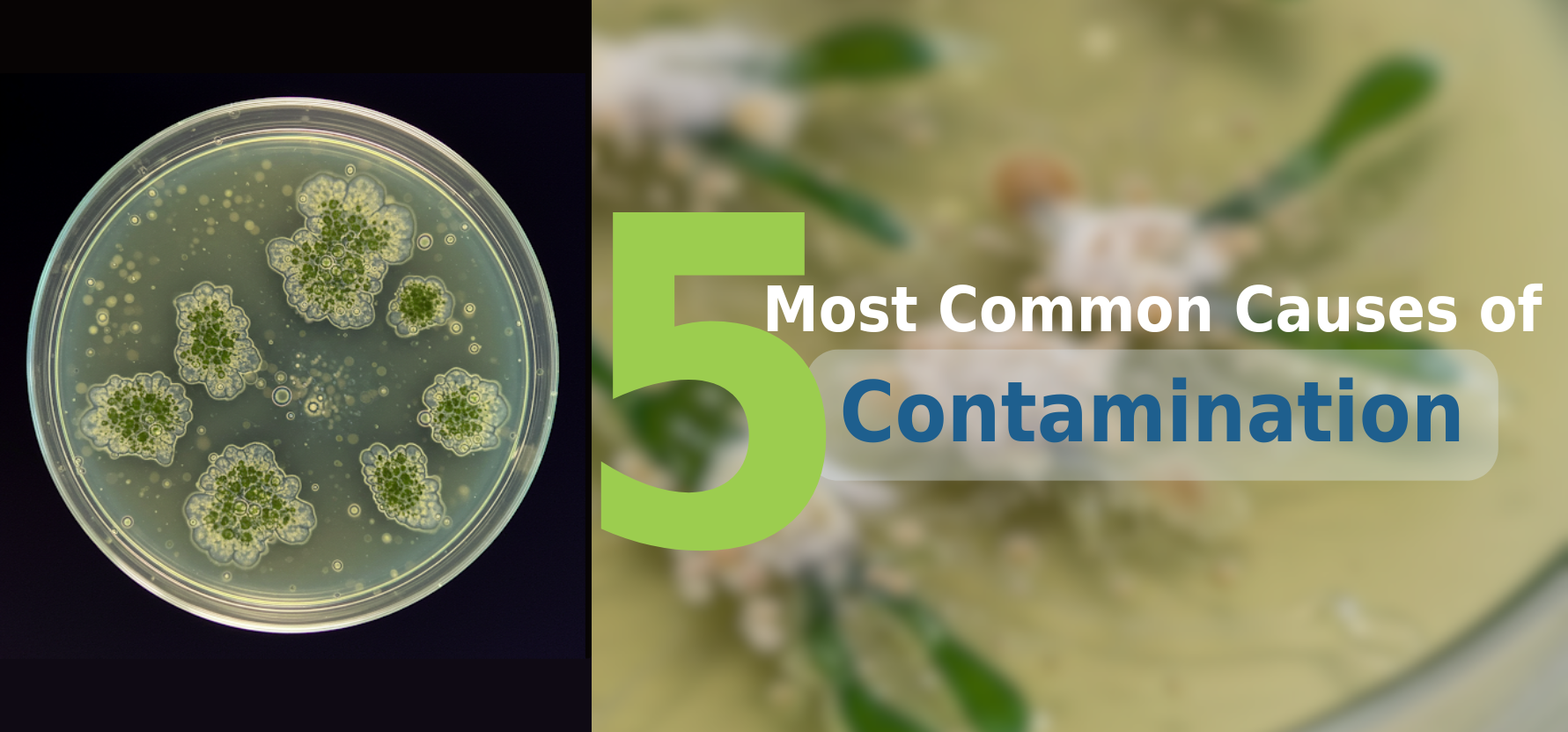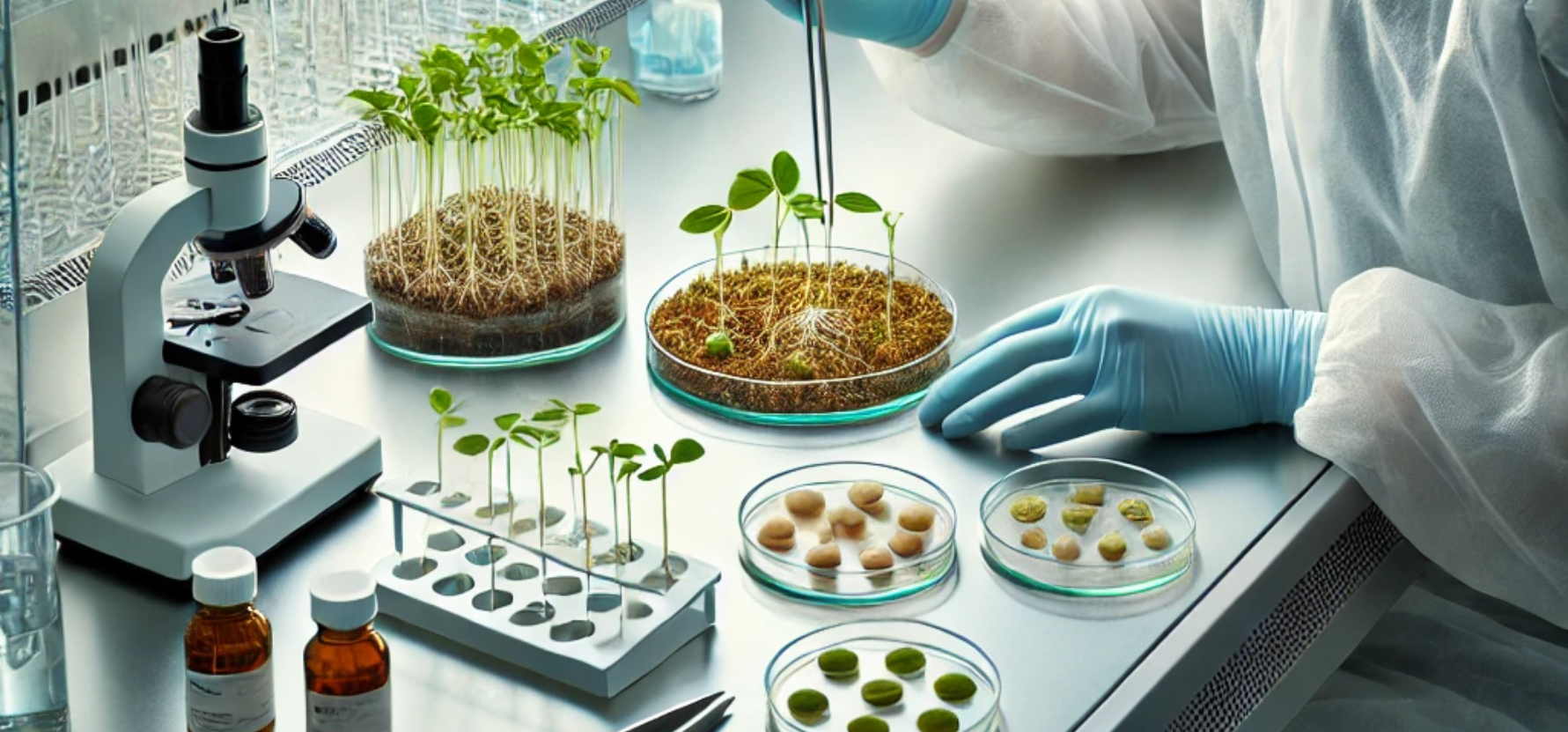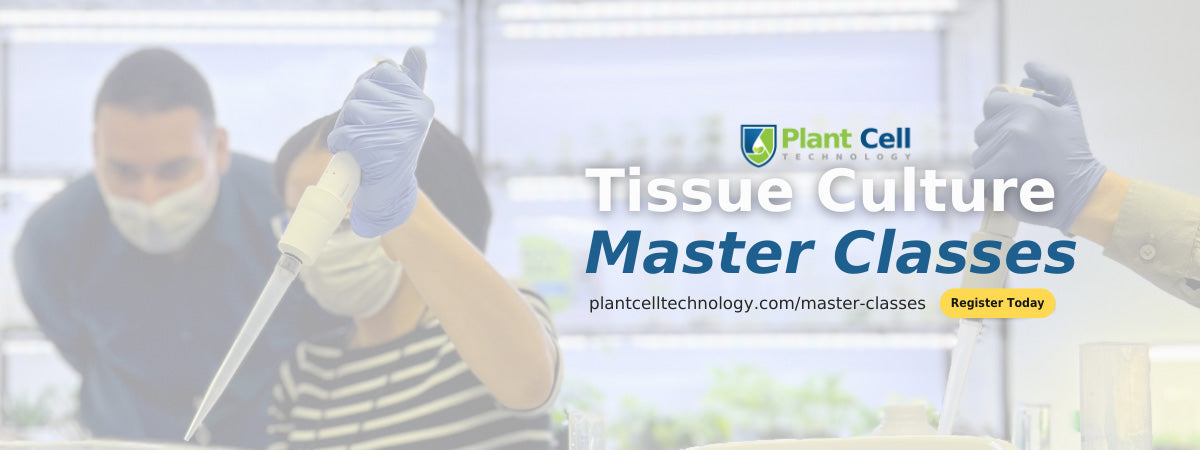
Cannabis Propagation: Infection and Prevention
As a content and community manager, I leverage my expertise in plant biotechnology, passion for tissue culture, and writing skills to create compelling articles, simplifying intricate scientific concepts, and address your inquiries. As a dedicated science communicator, I strive to spark curiosity and foster a love for science in my audience.


Even with the legalization of Cannabis, there are some challenges faced by the Cannabis cultivators that limit large scale propagation of the plant. A few of the challenges include infection outbreaks of pests and microbial infections, transportations challenges, and uniformity between the Cannabis crops.
The Emerging Cannabis Industry
Over the past few years, the scope of the Cannabis industry has focused more on the enhancement of high-yielding varieties and strains and the development of modern production techniques. Despite being the most common illegal crop in the world, cannabis is believed to be the world's next commodity crop and one of the fastest emerging markets on the globe.
Cannabis is a plant with thousands of small molecules that each have potential to function as food, nutrition value having polyunsaturated fatty acids, omega3 and omega6, and fibers that are used in industries. Cannabis, also known as marijuana or weed, contains 120 unique cannabinoids, majorly including THC, CBD, THCV, CBC, CBG, and CBN. Many of these Cannabis compounds hold medicinal importance.
The restrictions on Cannabis cultivation have been a major challenge for scientists to develop methods that enhance the productivity and output of these plants. However, some countries including Canada, the United States of America, the Republic of South Africa, Netherlands. Spain, Belgium, Uruguay, Jamaica, and Costa Rica, have legalized the propagation of the plant with some control regulations.
Even with the legalization of Cannabis, there are some challenges faced by the Cannabis cultivators that limit large scale propagation of the plant. A few of the challenges include infection outbreaks of pests and microbial infections, transportations challenges, and uniformity between the Cannabis crops.
This article highlights the types of infection problems of Cannabis culturing and their solutions!
Infection of Cannabis crops and cultivation challenges
Cannabis consumers demand high-quality plants that are pesticide-free and have stable genetics at all levels of production. But, producing high-quality Cannabis in volume is one of the biggest challenges for Cannabis cultivators. What makes it more difficult is the plant’s sensitivity to infections.
Because of prohibitions, people are being forced to grow Cannabis in warehouses and garages. If mother plants are kept in such a condition for a long time, they build pathogens like molds and mildews. That's why, if you look at big agriculture industries, their nurseries are always separated from the production space. If you are working with a fewer number of plants, then, the catastrophic loss due to infection is minimized, but when you work with hundreds and thousands of plants, proper plant management becomes a challenge.

Type of Pathogen Attacks in Cannabis
Cannabis is sensitive to viral, fungal, or bacterial infections. Any virus outbreak in crops costs a huge amount of time spent in growing the plants. Especially, if viruses are endophytic or in the dormant stage during detection, they might go undetected. This can cost farmers their effort, money, and time. Some other organisms like aphids and mice act as a vector to Cannabis infections.
Various factors play a role in influencing disease development, such cultivation methods, different growing environments, and the strains or genetic selections of hemp and cannabis. Conventionally, cannabis is grown using plant cuttings and then transferred to different conditions of specific reduced lighting regimes (photoperiod) to induce flowering.
During the production cycle, there's high chances of fungal infection in roots, while flowers are infected at their developmental stages.
Hemp Viruses
In hemp, approximately 900 viruses are detected but only two specific viruses are identified; these viruses are Hemp Mosaic Virus and Hemp Streak Virus. Some other viruses that attack hemp through vectors include Tobacco Ring spot Virus and Tobacco Streak Virus. These viruses cause mottling on the leaves and poor growth of plants. Cucumber mosaic virus and tomato ring spot virus can also infect cannabis.
Bacterial contamination can be on the surface or inside the cell wall of plants. And, if fungus attacks hemp plants, then it takes around 6-9 months to get rid of them. Cannabis growth can also be negatively impacted by excessive use of heavy metals. What can be the possible solution to these issues? Let’s have a look at the prevention of hemp infection.

Fusarium Root And Crown Rot
Fusarium and Pythium species are the most destructive root pathogens that affect Cannabis at its rooting phase or vegetative phase. The infection can progress to flowering stages, causing stunting and ultimately death of the infected Cannabis plant. The infections caused by Fusarium and Pythium can cause 30% loss of the crop. To protect the plant from disease and control infection, you can try.
- Implement pathogen control strategies early during the production cycle (that is within 2-4 weeks).
- Biological control agents can be used to manage the Cannabis disease, however, comparative data efficacy is lacking.
Powdery Mildew Or Mold Infection
Powdery mildew or mold generally occurs in Cannabis bud. Gray mold is caused by Botrytis. It's one of the most damaging fungi and kill Cannabis in a week. Also, you must not that, before it kill the plant, it can remain dormant for a long period of time. Its symptoms include brown, water-soaked spots on buds, gray-brown mass of spores on bud, chlorotic areas on stem, interveinal yellowing leaves showing necrosis, and smaller buds.
The Solution to Help Infection Problems

No pesticide is so far federally registered for use on Cannabis and because of infection challenges 84% of cannabis in California isn’t fit for consumption according to a report.
The solution to these problems include:
- Tissue culture with good culturing and manufacturing practices
- Personnel training
- Documentation like batch records and quality assessment and control.
- Maintain clean stock nurseries with a strong pest management program
- Conduct studies on the pathogens potentially affecting cannabis plants. This will help in managing emerging molds and other diseases that effect Cannabis.
Why is Tissue Culture The Best Solution For Hemp Infection Problems?
Tissue culture is a technique to grow a whole plant from single cells or a group of cells. It has the potential to grow thousands of plants using just one plant. This technique can help culturists to reduce crop loss. It can provide a clean mother plant for future cultivation that will be pesticide-free and disease-free. Also, it enhances the storage efficiency for high-volume stocks. The tissue culture of plants allows them to deploy new genetics or maintain the original genome of plants. It gives plants improved vigor and uniform genetics that also satisfies the phytosanitary standards and regulations.
The tissue culture of Cannabis has four stages:
- Initiation, which requires 1-2 weeks
- Multiplication, which requires 2-3 weeks
- Rooting 2-4 weeks (very difficult to set)
- Acclimation, which requires 1-2 weeks

The most common technique in tissue culture to eliminate viruses is meristem culture. The two meristems used for the purpose include apical meristem and lateral meristem. You can also do auxiliary node culture and wait for two weeks to check for any contamination in the cultures. Avoid using TDZ hormone in Cannabis culture as some researchers have observed the growth of unhealthy plants after using it in their growth media for hemp. The best alternative is to use the best combination of auxin and cytokinin to obtain pretty good growth of plants.
The other way to avoid pathogens from plants is by using water with 3-5% hydrogen peroxide every day with or without nutrients. This slows down the pathogen and endophytes attacking your plants.
How Can PPM™ Save Cannabis Cultures?
Some endophytes or pathogens can still evade the process mentioned above. The complete prevention of contaminants can be achieved by using Plant Preservative Mixture (PPM™) in growth media. This compound has the potential to kill any microbes attacking your cultures whether it's airborne, waterborne, or came through any human contact. Not just this, PPM™ can also prevent endophytes from spoiling your cultures. You just need to add 1-2 ml PPM™ per liter of the prepared media to get good results. The best part is the chemical can be easily autoclaved as it is heat stable. And, if accidentally you freeze the chemical in ice, it will still give you the same best results after being thawed. It’s a superb solution to all your contamination problems.
NOTE: PPM™ is not included in the list of approved pesticides for commercial cannabis purposes.
The consideration factors before doing tissue culture include the cost, labor requirement, and timeliness of the process. Pathogen testing will also be required before performing the process to avoid any contaminants from spoiling all your cultures. You need to use proper hormones and media for your cultures and keenly observe them at all their stages.
Comprehensive Cannabis Tissue Culture Master Class To Help Growers With Achieving Their Business Targets

Every technique has its pros and cons. However, the best that works are the ones that can be carried with no friction with our cash in our hands and facility and help us achieve our desired goals.
Looking at the advantages offered by tissue cultures and the rising interest of growers and Cannabis business owners worldwide, people speculate tissue culture is the future of Cannabis propagation and business.
So, if you are ready to take your Cannabis business to next level and want to try your hands on tissue culture, come join us at the “ Cannabis Tissue Culture Master Class” to learn all about the process and more.
Even if you already have an established Cannabis tissue culture business, this Master Class will be proved to be an event for you to network and connect with other growers like you and seize new deals with them.
Whatever the reason! If you are in the Cannabis industry, you won’t regret joining the event.
Not at much expense, the Master Class gives you access to everything related to Cannabis tissue culture, ranging from protocols, sterilization process, gender screening, long-term preservation techniques, and much more.
Not to forget, you are learning all this directly from the Cannabis tissue culture GURU, Bill Graham, and the PCT instructors themselves.
Since there are only a limited number of seats available, we encourage you to book your tickets today to secure your place at the table of all Cannabis growers and businessmen worldwide.
See You at the Master class!
Let us know what plants are growing in your lab, share your story with us, and we will feature it on our social media platforms to boost the enthusiasm of other culturists.
Excited to hear from you!
Happy culturing!!

References
- Chouvy P.-A., Macfarlane J., 2018. Agricultural Innovations in Morocco’s Cannabis Industry. International Journal of Drug Policy, vol. 58, p. 85-91.
- https://cannabislegale.org/countries-where-its-leg...
Blog Categories
View by Level
Popular Blogs

The 5 Most Common Causes of Contamination in Tissue Culture Labs
Introduction Scaling up your tissue culture production is impossible if you’re constantly battling contamination. Contamination is one of the biggest...
Read More
What No One Tells You About Subculturing (Until It’s Too Late)
Introduction Subculturing is a crucial process in tissue culture. Why? Because it's responsible for multiplying a single small piece of...
Read MoreSubscribe to Our Newsletter








Join the conversation
Your email address will not be published. Required fields are marked